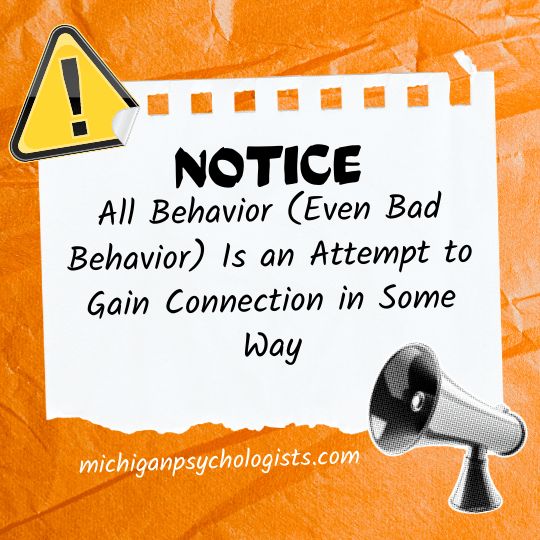All Behavior (Even Bad Behavior) Is an Attempt to Gain Connection in Some Way

Table of Contents
Have you ever wondered why people, especially children, sometimes behave in ways that are puzzling or outright challenging? At its core, all behavior, whether good or bad, is an attempt to gain connection in some way. Understanding this fundamental truth can transform how we approach and respond to behavior, fostering more meaningful and positive interactions.
The Inherent Nature of Behavior
Why We Behave the Way We Do
Human behavior is driven by a complex interplay of biological, psychological, and social factors. At its essence, behavior serves as a communication tool, a means to meet our needs and establish connections with others. This is true for both positive and negative behaviors.
- Good Behavior: Acts that are generally considered socially acceptable and rewarding. These behaviors often lead to positive reinforcement, such as praise, love, or acceptance.
- Bad Behavior: Acts that are considered disruptive or inappropriate. While these behaviors might lead to negative consequences, they often stem from unmet needs or a desire for attention and connection.
Examples of Good and Bad Behavior
Children
- Good Behavior: Sharing toys with peers, following instructions, showing empathy.
- Why They Do It: To gain approval from adults, to feel a sense of belonging, to model after observed positive behaviors.
- Bad Behavior: Throwing tantrums, hitting peers, defying rules.
- Why They Do It: To express unmet needs, to seek attention, to test boundaries.
Teens
- Good Behavior: Participating in school activities, helping with household chores, showing respect to authority.
- Why They Do It: To earn trust and privileges, to build self-esteem, to foster peer acceptance.
- Bad Behavior: Skipping school, engaging in risky behaviors, arguing with parents.
- Why They Do It: To assert independence, to cope with stress, to gain peer approval.
Adults
- Good Behavior: Volunteering, maintaining healthy relationships, performing well at work.
- Why They Do It: To fulfill a sense of purpose, to strengthen social bonds, to achieve personal satisfaction.
- Bad Behavior: Procrastination, aggression, substance abuse.
- Why They Do It: To manage stress, to escape from responsibilities, to seek connection or relief.
How to Stop Bad Behavior
Understanding the Root Cause
To effectively address and stop bad behavior, it’s essential to understand the underlying reasons behind it. Often, bad behavior is a symptom of deeper issues such as unmet emotional needs, lack of communication skills, or environmental stressors.
Strategies for Change
- Positive Reinforcement: Encourage good behavior by rewarding it with praise, privileges, or tangible rewards. This helps reinforce desirable actions.
- Consistent Boundaries: Set clear, consistent boundaries and consequences for bad behavior. Consistency helps individuals understand the expectations and the importance of adhering to them.
- Communication: Foster open communication to understand the person’s needs and feelings. Active listening and empathetic responses can reduce the occurrence of bad behavior.
- Modeling: Demonstrate positive behaviors for others to emulate. Children, in particular, learn by observing the actions of adults around them.
How to Encourage Good Behavior
Creating a Positive Environment
A supportive and nurturing environment can significantly influence behavior. Ensure that individuals feel valued, respected, and understood.
Practical Tips
- Provide Attention: Offer regular, positive attention to reinforce good behavior. This helps individuals feel recognized and appreciated.
- Teach Problem-Solving Skills: Equip individuals with the skills to resolve conflicts and cope with challenges in constructive ways.
- Celebrate Successes: Acknowledge and celebrate achievements, no matter how small. Recognition fosters a sense of accomplishment and motivates continued positive behavior.
- Empower Autonomy: Allow individuals to make choices and take responsibility for their actions. Empowerment fosters self-confidence and encourages responsible behavior.
Understanding that all behavior, even bad behavior, is an attempt to gain connection can profoundly change how we interact with others. By addressing the underlying needs driving behavior and fostering a positive environment, we can reduce negative actions and promote healthier, more constructive behaviors. Encouraging good behavior through consistent support, positive reinforcement, and open communication leads to more meaningful and satisfying connections, ultimately benefiting everyone involved.